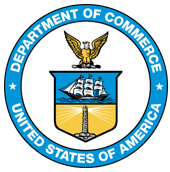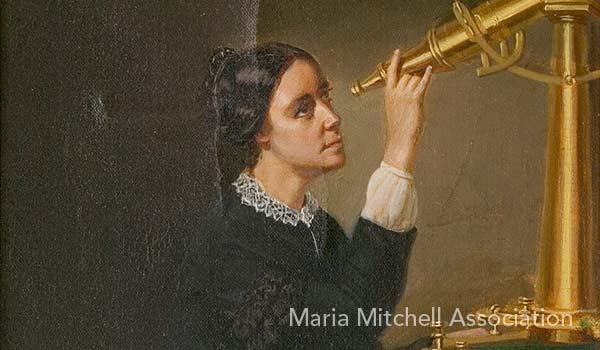Ed. note: This post is part of the Spotlight on Commerce series highlighting the contributions of current and past members of the Department of Commerce during Women's History Month.
It's a dark cold night in the early 1830s in Nantucket, Massachusetts. On one house's widow's walk, a father and daughter, bundled against the cold, are studying the night sky, stars, and seas, armed with telescope and sextant. When the whalers leave port next time, passing through what is now Stellwagen Bank National Marine Sanctuary, bound for distant waters in the Atlantic, Pacific, and Arctic, they will carry the navigational calculations that young Maria Mitchell has provided them.
Facing the social views of her time, Mitchell later wrote: "First, no woman should say, 'I am but a woman!' But a woman! What more can you ask to be?" She and other pioneering female scientists are the intellectual ancestors of thousands of American women today working in STEM fields: science, technology, engineering, and mathematics. In the National Marine Sanctuary System, about half of our sanctuary research coordinators are female, as are other members of our science team, working as socio-economists, marine archaeologists, and marine scientists to help achieve our conservation mission.
Nearly a century and a half after Mitchell taught astronomy to her female students at Vassar College, many young women enter STEM fields. Yet much work remains. There are over seven million STEM workers in the U.S.; more of them are women than ever before. Half of our working biological and environmental scientists are women, yet women lag behind in other sciences like engineering and computer science. Over 70,000 women employed in STEM fields serve the American people as part of the federal government, but that's only about 23% of 300,000 federal scientists, engineers, and technical experts.
Leading up to college, boys and girls enroll in and perform similarly well in math and science courses and exams. The first disparities appear at the university level and continue, at least for some science and engineering fields, into the professional world. Sociological research shows that bias plays a major role in preventing women from entering or hastening the departure of women from STEM fields. One fundamental solution to reducing the gender disparity in STEM fields is to address bias, through such ways as being aware of and addressing our personal biases, and undergoing anti-bias training and education.
Another solution is to encourage more girls to become and stay interested in the sciences. Effective strategies recommended by SciGirls include engaging girls in small collaborative groups; encouraging girls to use their creativity and think critically; and motivating girls with hands-on projects. Although the National Marine Sanctuary System's Ocean Guardian School Program wasn't designed specifically to address gender disparity in STEM education, it uses these kinds of approaches to engage elementary school students in ocean science and conservation. Seaberry Nachbar, Ocean Guardian School program director, says, "The Ocean Guardian School Program provides the opportunity for girls and boys to apply real-world science to current issues that are impacting our ocean resources. In the process of doing this, they are provided with the scientific knowledge, awareness, and confidence to make a difference in their future." When women are encouraged and supported in STEM fields, they can make a lasting impact on our nation and our sciences. Maria Mitchell, for example, had an unusual amount of support and education as a girl and woman of her time, and she went on to be a respected astronomer, discoverer of a comet, college professor, and mentor to young female scientists.
Mitchell also had the distinction of being the first professional woman hired by the federal government. She was hired to do astronomical observations for the U.S. Coast Survey, now part of NOAA. She paved the way for a number of other distinguished scientists, who happen to be women, at NOAA and its forebear agencies, among them marine zoologist Dr. Mary Jane Rathbun (U.S. Bureau of Fisheries, the forerunner to today's U.S. Fish and Wildlife Service and National Marine Fisheries Service), coral expert Dr. Elizabeth Deichmann (U.S. Bureau of Fisheries), meteorologist June Bacon-Bercey (National Weather Service), author and activist Dr. Rachel Carson (U.S. Bureau of Fisheries), explorer Dr. Sylvia Earle (NOAA), Rear Admiral Evelyn Fields (NOAA Corps), and marine biologist Dr. Nancy Foster (NOAA).
Maria Mitchell wrote, “Resolved, in case of my outliving father and being in good health, to give my efforts to the intellectual culture of women.” Her legacy was bigger and brighter than even she could probably imagine. This month, we honor her and all the women scholars and scientists who pioneered the way for those of us who follow.
This blog was originally published as part of the National Marine Sanctuaries, "Celebrating Women's History Month in Sanctuaries: Pioneering Female Scientists: March 2017."


